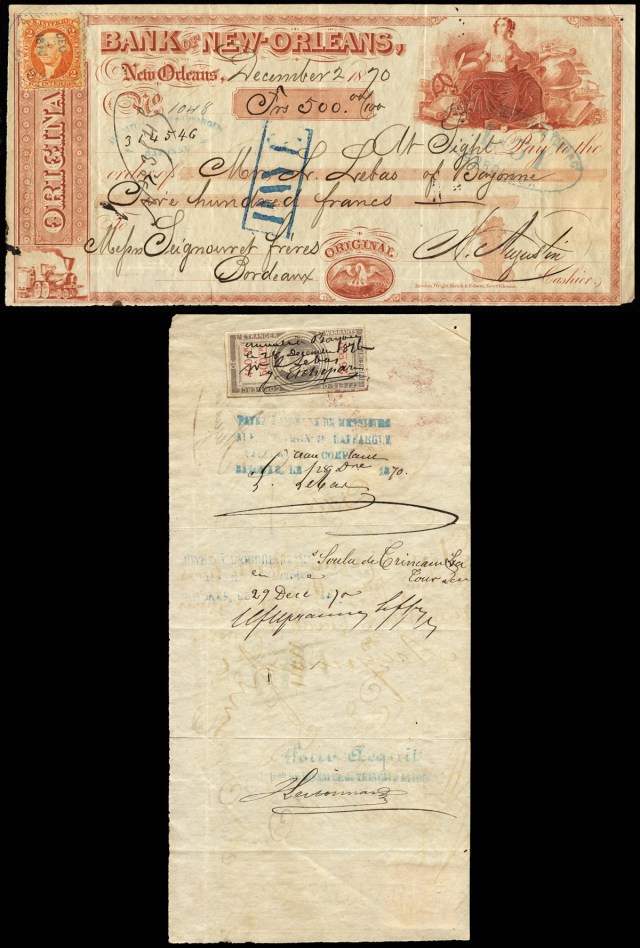
This 1868 revenue document hits all of the sweet spots!
Purchased from an eBay seller in Germany, this is an R15c on an attractive foreign exchange with two vignettes from the European Exchange Office of C. F. Adae, a Cincinnati, Ohio banking house.
Notice that all of the wording of the document is in German.
Not only is there a German Prussian revenue stamp also affixed to the reverse (combination usages of both U.S. and non-U.S. revenue stamps on the same document from this era are quite scarce), but the R15c is tied not only by a C.F. Adae circular handstamp cancel, but also a blue oval of Reverchon & Co., a German banking house in Trier… a U.S. revenue stamp legitimately used in Germany. Corrected per Bart below… not actually used *in* Germany, but rather the document was executed and taxed here and exported to Germany, where the Prussian revenue stamp was then affixed.
Fantastic document!
Response from revollector (Bart Rosenberg):
Alas, it was not “used in Germany”. It was used in Cincinnati. The document was then sent to Germany where the stamp was hit with a receiving mark, possibly deliberately. Obviously any stamped document for export had the stamps wind up in the country involved. Germany did not as yet exist in any case; this stamp is from Oldenburg. Since it is only a relatively small city-state, this is likely to be a very scarce combination indeed. These documents were always sent out in triplicate and the first one received was then accepted and used. GB and France are the most common European countries for mixed usages, although all are certainly scarce. I would think the larger German States might be somewhat more common, although still scarce. Any other country in Europe (or anywhere else) is VERY scarce, and not all countries used revenue stamps to tax this type of transaction. No doubt millions were used, but the survival rate is very poor. A lovely document.
Response from revenuermd (Ron Lesher):
There must have been a significant German population in Cincinnati with business connections back in the homeland. There are other U.S. German combination documents in the stamped paper field. As time went on, the role of stamped paper loomed larger than lick and stick revenue stamps. By 1880 two-thirds of the revenue collected on checks payable at sight is being paid by stamped paper. Only about a third is paid by traditional stamps.
My response:
Bart, you’re correct in that the revenue stamp on the back predates the German Empire; I should have been more thorough. Per discussion with Mike Mahler overnight, the stamp is from Prussia, and it was sent out in duplicate rather than triplicate (there is a subcategory in his book under Foreign Exchange, entitled “Bills Made Singly or in Duplicate, Payable at Sight”, and C.F. Adae is listed in the population tables, although Trier is a previously unrecorded city of use).
Ron, I believe you are correct with respect to the German population, as there would had to have been in order to justify printing the documents in German rather than English, since as Bart states, it actually was executed here before shipment to Germany, rather than originating in Germany. Most foreign exchange documents (at least those I have seen in person or pictures of) are printed in English rather than the language of the destination country.
A similar sort of document, with France as the destination:

